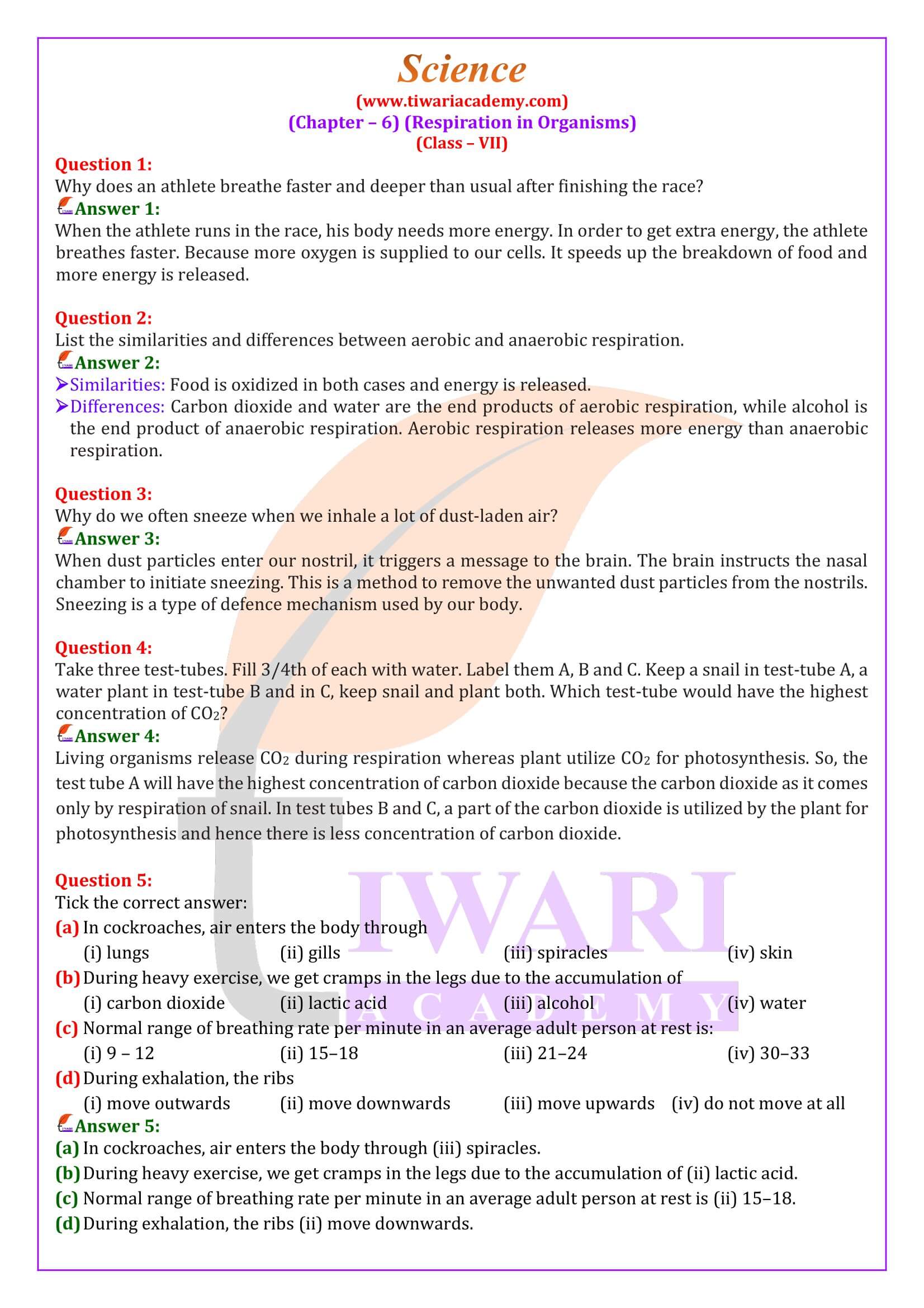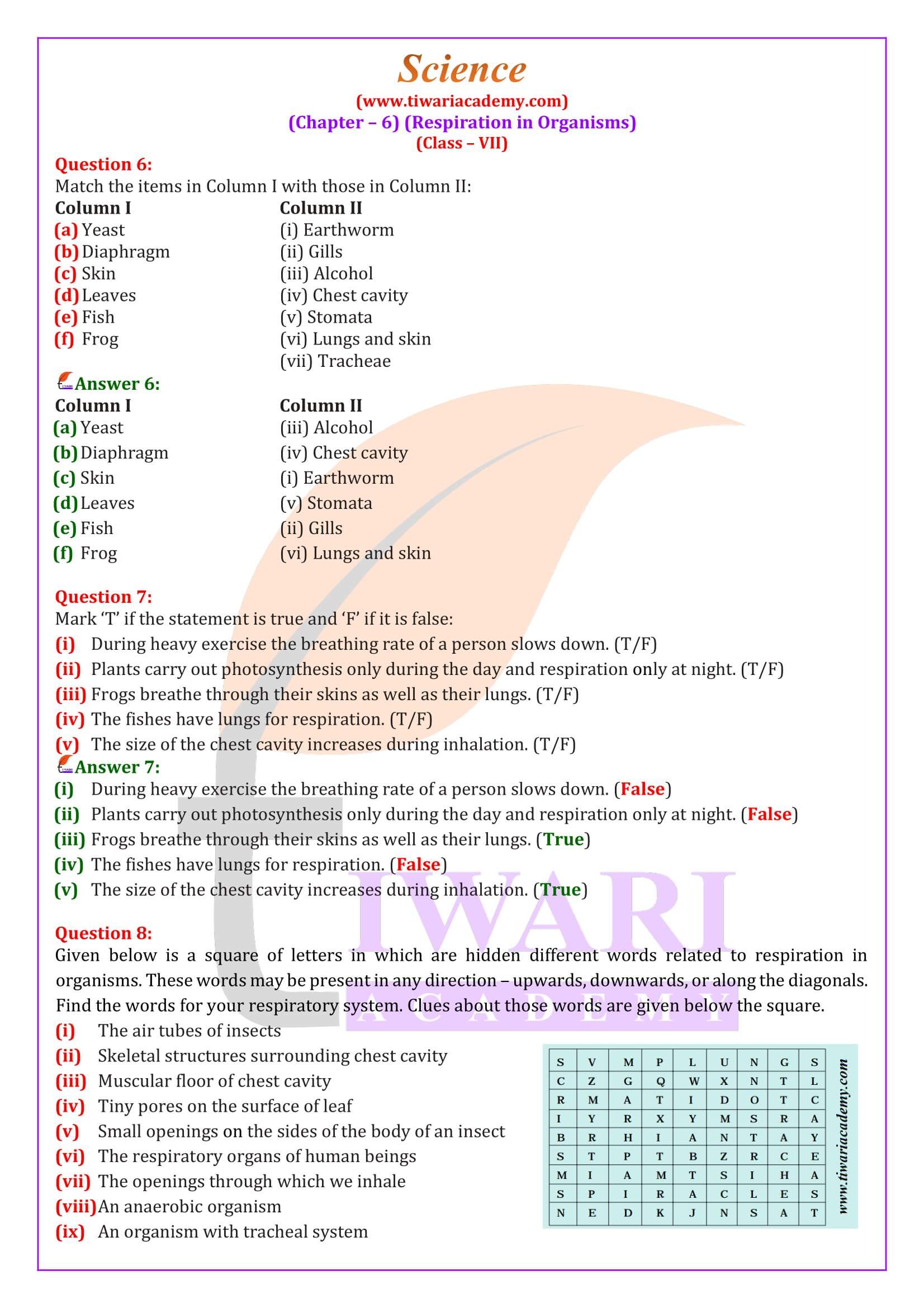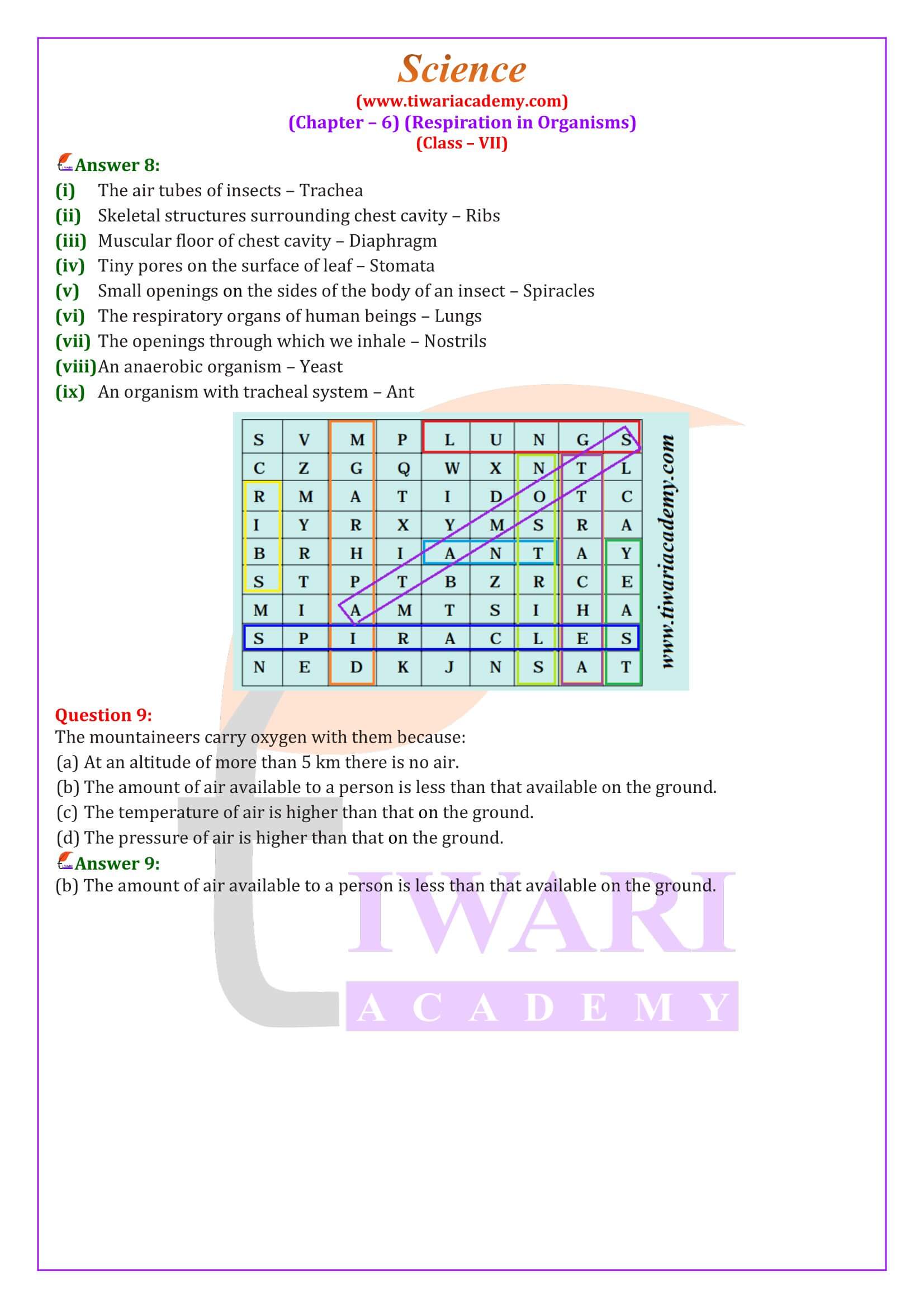Question Wise Class 7 Science Chapter 6 Solutions
Class 7 Science Chapter 6 NCERT Answers
Class 7 Science Chapter 6 in Hindi Medium
Class 7 Science Chapter 6 Extra Questions
Class 7 Science Chapter 6 MCQ
Class 7 Science NCERT Book Download
NCERT Solutions for Class 7 Science Chapter 6 Respiration in Organisms in English Medium or Hindi Medium free to download in PDF file format or View online updated for new academic session 2024-25. Video Format of these solutions are also available free to use. Download NCERT Books and CBSE NCERT Solutions Apps for new academic session 2023–24.
| Class: 7 | Science |
| Chapter 6: | Respiration in Organisms |
| Content: | MCQ, Extra Questions and Exercises |
| Content Type: | Text, PDF and Videos |
| Academic Session: | 2024-25 |
| Medium: | English and Hindi Medium |
Class 7 Science Chapter 6 in English Medium
Class 7 Science Chapter 6 Answers
CBSE NCERT Solutions for Class 7 Science Chapter 6 Respiration in Organisms are given below to use online or download in PDF form free for the academic session 2024-25. Download links of NCERT Books are also given at each page. Visit to Discussion Forum to ask your doubts or to respond the questions asked by other users.
Class 7 Science Chapter 6 Explanation and Solution in Videos
Important Questions on 7th Science Chapter 6 for Practice
1. Earthworms and frogs breathe through their skin because of which the skin of both the organisms is
(a) moist and rough.
(b) dry and rough.
(c) dry and slimy.
(d) moist and slimy.
2. Sometimes when we do heavy exercise, anaerobic respiration takes place in our muscle cells. What is produced during this process?
(a) alcohol and lactic acid
(b) alcohol and CO2
(c) lactic acid and CO2
(d) lactic acid only
3. Breathing is a process that
(i) provides O2 to the body.
(ii) breaks down food to release energy.
(iii) helps the body to get rid of CO2.
(iv) produces water in the cells.
Which of the following gives the correct combination of functions of breathing?
(a) (i) and (ii)
(b) (ii) and (iii)
(c) (i) and (iii)
(d) (ii) and (iv)
4. During the process of exhalation, the ribs move
(a) down and inwards.
(b) up and inwards.
(c) down and outwards.
(d) up and outward.
5. Fish breathe with the help of gills which are richly supplied
with blood vessels. The gills help the fish to
(a) take in oxygen from air.
(b) take in oxygen dissolved in water.
(c) absorb nutrients present in water.
(d) release waste substances in water.
6. Yeast is used in wine and beer industries because it respires
(a) aerobically producing oxygen.
(b) aerobically producing alcohol.
(c) anaerobically producing alcohol.
(d) anaerobically producing CO2.
7. Whenever we feel drowsy or sleepy, we start yawning. Does yawning help us in anyway?
8. A food stall owner was preparing dough for making bhaturas. He added a pinch of yeast and sugar to the dough and left it in a warm place. After few hours, the dough had risen. There was a sour smell too.
(a) Why did the dough rise?
(b) Why did the dough smell sour?
(c) Why was sugar added to the dough?
(d) What would have happened if the dough was kept in the refrigerator, soon after it was prepared?
Answers of Important Questions
1 (d)
2 (d)
3 (c)
4 (a)
5 (b)
6 (c)
7. During drowsiness, our breathing rate slows down. The lungs do not get enough oxygen from the air resulting in yawning. Yawning brings extra oxygen into the lungs and helps us to keep awake.
8. (a) The CO2 released during respiration by the yeast results in the rise of dough.
(b) During anaerobic respiration, yeast produces alcohol resulting in sour smell.
(c) Sugar acts as food for yeast.
(d) At low temperatures, yeasts will not multiply and respire because of which the dough will not rise or become sour.
Important NCERT Questions Class 7 Science Chapter 6
Why does an athlete breathe faster and deeper than usual after finishing the race?
When the athlete runs in the race, his body needs more energy. In order to get extra energy, the athlete breathes faster. Because more oxygen is supplied to our cells. It speeds up the breakdown of food and more energy is released.
Why do we often sneeze when we inhale a lot of dust-laden air?
When dust particles enter our nostril, it triggers a message to the brain. The brain instructs the nasal chamber to initiate sneezing. This is a method to remove the unwanted dust particles from the nostrils. Sneezing is a type of defense mechanism used by our body.
Take three test-tubes. Fill each of each with water. Label them A, B and C. Keep a snail in test-tube A, a water plant in test-tube B and in C, keep snail and plant both. Which test-tube would have the highest concentration of CO2?
Living organisms release CO2 during respiration whereas plant utilize CO2 for photosynthesis. So, the test tube A will have the highest concentration of carbon dioxide because the carbon dioxide as it comes only by respiration of snail. In test tubes B and C, a part of the carbon dioxide is utilized by the plant for photosynthesis and hence there is less concentration of carbon dioxide.





